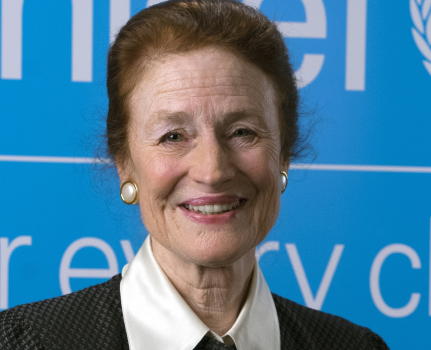This is what collapsing health, education, water and sanitation systems look like in Yemen
By: Henrietta H. Fore
In Yemen, one child dies every 10 minutes from a preventable disease, and on a recent visit to the country, I saw first-hand what that meant.
At the Al Qateea hospital in Aden, southern Yemen, mothers hold frail, acutely malnourished babies while psychosocial workers offer to counsel to terrified children, some of whom have experienced the horrors of war before they are even old enough to go to school. An eight-year-old girl draws a picture of the world she dreams of, one in which the streets are safe, the sun is shining and the birds are chirping – nothing like the real world around her.
Further north, a similar scene is unfolding at the Al Sabeen hospital in Sanaa. Up to 30 new young patients stream in every day to the hospital’s malnutrition ward. In the neonatal intensive care unit, newborn babies in incubators struggle for every breath.
Keeping babies alive in a country where nothing works anymore is a real challenge: There are not enough respirators and not enough medicine. Health staff diligently report to work even though they have not received their salaries in two years. The malnutrition ward is packed. Parents have no money for health care and by the time they bring their sick babies in, it is often too late.
This is what a collapsing health system in a war zone looks like. It has the face of a mother who looks on, powerless, as her eight-month-old child, who has the weight of a newborn baby, fights for his life. It has the face of a father who has to choose between buying food for the whole family or buying medicine for his sick wife.
Yemen had some of the worst health indicators globally even before the current escalation of fighting. Stunting rates are among the highest in the world, at 47 percent. 1 in 60 women runs the risk of dying from pregnancy-related complications. Under-five mortality is high, at 55 per 1,000 live births.
Three years into this conflict, more than half of the health facilities are non-functional due to damage or a lack of operating budget and staff. Half of the country’s children do not have clean water. An outbreak of cholera/acute watery diarrhea last year, the biggest on record, killed more than 400 children under the age of five. At least 80 percent of the population live below the poverty line.
The whole public service sector in Yemen, not just health, has been left in tatters. Teachers have not been paid in months, forcing many to abandon their classrooms and find other sources of income. Up to 1,500 schools have been damaged due to airstrikes and shelling, or have been occupied by armed forces and displaced persons.
Sanitation workers to have been expected to come to work although they are not paid. Not doing so poses a serious risk in a country where cholera and famine are persistent risks.
We need funding to offer similar incentives for teachers and water and sanitation workers. But more importantly, all authorities in Yemen need to step up, recognize the urgency and get public services in the country up and running again.
Peace is the only way Yemen can inch its way towards recovery. It is the only way children can help build their futures and the future of their communities. It is the only way forward.
Henrietta H. Fore is UNICEF Executive Director.

